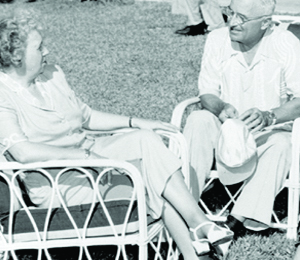Wanting to preserve the history of Key West and create a legacy for future generations, Key Westers developed The Historic Memorial Sculpture Garden in Mallory Square in 1997. It features 36 bronze busts of the historical men and women who have had a great impact on the island. Here’s an outline of some of the historical figures featured in this magnificent sculpture garden.
Commodore David Porter
In 1822, the United States was interested in Key West as a base for naval operations due to its easy access through the Gulf of Mexico. However, there was a lore of pirates and desperados that plagued the area. Commodore David Porter was appointed head of the West Indies Anti-Pirate Squadron to end piracy, protect shipping and to put an end to the slave trade. Porter was chosen by President James Monroe due to his reputation as an expert naval strategist and his success fighting the Barbary pirates in 1801. His main mission was to put an end to the pirate group known as the “Brethren of the Coast.” For decades, these swashbucklers had been harassing and plundering shipping throughout the Caribbean and the Gulf of Mexico. Porter erected a naval base in the town that served as a base of operation in the fight against piracy. Under his command, the Anti-Pirate Squadron was efficient, quick and lethal. With a small fleet of 16 ships known as the Mosquito Fleet, Porter eradicated piracy throughout the Cuban waters, Gulf of Mexico and the Caribbean. The first American flag was planted on the island's soil by Commodore Porter.
Henry M. Flagler
Henry M. Flagler was a railroad visionary who forever changed life in the Florida Keys. In the early 1900s, he conceived and led the construction of the Florida Keys Over-Sea Railroad. It paved the evolution of what is internationally recognized today. He recognized the value of the western Key when the Panama Canal opened and remained undaunted in the overwhelming construction challenges of storms while extending the railroad into the island. Under his direction, a series of viaducts and bridges was constructed that stretched more than 100 miles into the water. Over the next two decades, the Florida Keys Over-Sea Railroad transported thousands of passengers between the Key islands and Miami. Although it was severely damaged in a 1935 hurricane, it is still hailed for its monumental impact on the island. With the railroad, Key West was a whole new world.
Ellen Russell Mallory
Ellen Russell Mallory was the first white female settler in on the island and a leading figure in the life and growth of the island until her death in 1885. After her husband’s death, she opened a boarding house for seamen on the island to support herself and her one son. Her Cocoanut Grove boarding house was the only lodging on the island for many years. Ellen’s boarding house was the center of hospitality and social life for those living in town. She cared and nursed for those suffering during many outbreaks of yellow fever and those who were injured during hurricanes. Ellen Russell Mallory is known as the “First Lady” of the town. When she died in 1855, just about the whole population of the island followed her bier to the cemetery.
Harry S. Truman
Originally constructed as a naval officer residence, President Harry S. Truman used the Key West residence as his winter White House. At the island White House, Truman used this location for summit meetings and to make major decisions about the use of nuclear weapons, post-World War II reconstruction and the Cold War. Legislation like the Marshall Plan and civil rights executive orders took place at the town's White House. The White House is comprised of West Indian and late Victorian architecture with spacious wrap around porches. In 1949, ten feet was added to the length of the residence along with enlarging the second floor bedrooms for use by Truman. Today, it is an historic landmark on the island and used as a museum. The White House was Truman’s favorite place to be due to the beauty and relaxed atmosphere of the island.
Ernest Hemingway
At a stop in Key West on a visit home from Paris, it was love at first sight for Ernest Hemingway. Hemingway was enthralled with the island’s charm, towering palm trees, pristine beaches and sparkling waters. With the help of his wife’s wealthy uncle, he was able to purchase a home. Hemmingway spent his days sailing his boat about the Keys and enjoyed sports fishing in the gulf. When he wasn’t enjoying the great outdoors, he was busy writing. It was here that he wrote “Death in the Afternoon,” “A Farewell to Arms,” and many short stories. Today, Hemingway’s presence can still be felt on the island. His home is open to the public for tours of the studio where he worked and the house.
Julius Stone
Julius Stone was a brilliant chemist and son of a wealthy family that lost its fortune during the Great Depression. He then took work with the New York welfare system and the Works Progress Administration. The town of Key West declared bankruptcy in 1934, and the governor turned the town over to the federal government’s Federal Emergency Relief Administration. Julies Stone was sent to the town to lead the relief efforts. Upon viewing the town, he decided that area could be a tourist mecca. Under his direction, thousands of city residents were organized into volunteer corps to help fix the city. The beaches were cleaned up, over 200 small houses were refurbished for summer rentals and the main streets were nicely landscaped. The result of his efforts and leadership was a town with a large tourist base to bring in revenue. After earning a law degree, Stone bought a house at the southernmost tip of the island.

